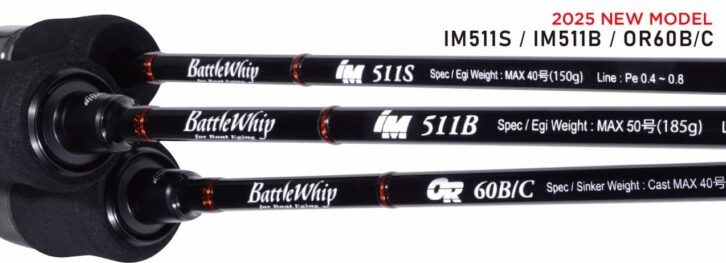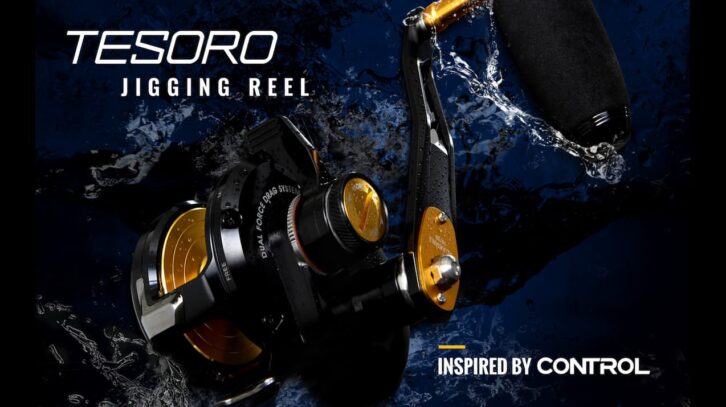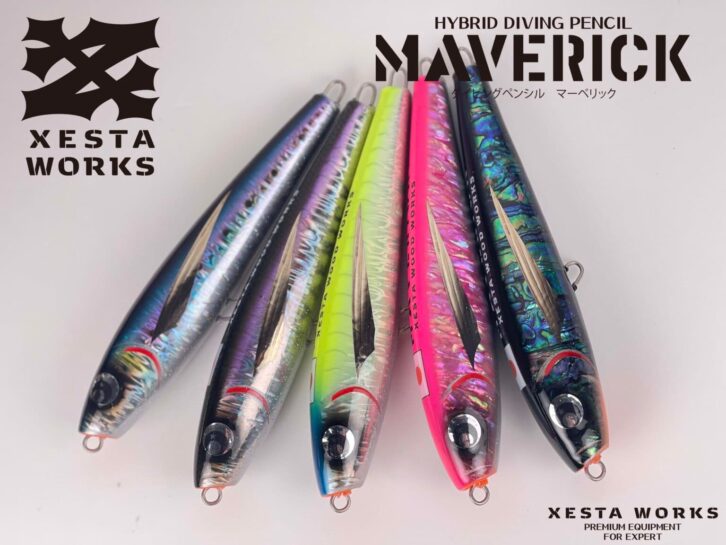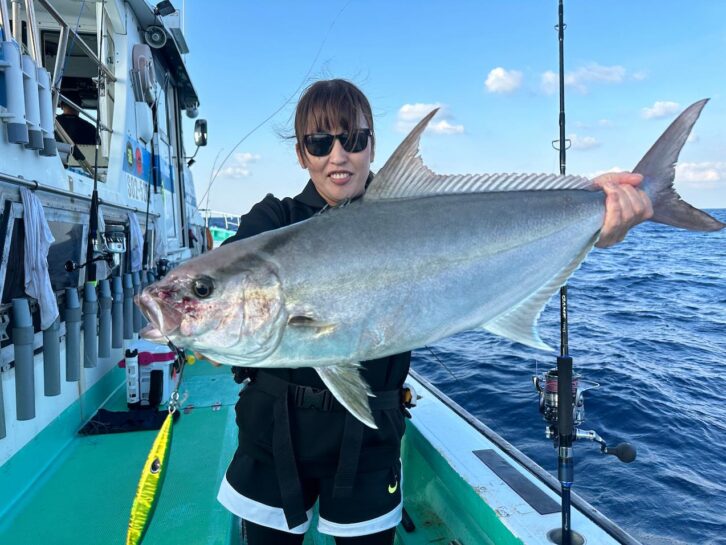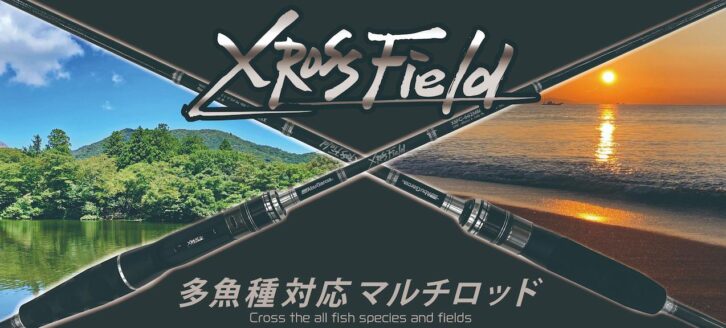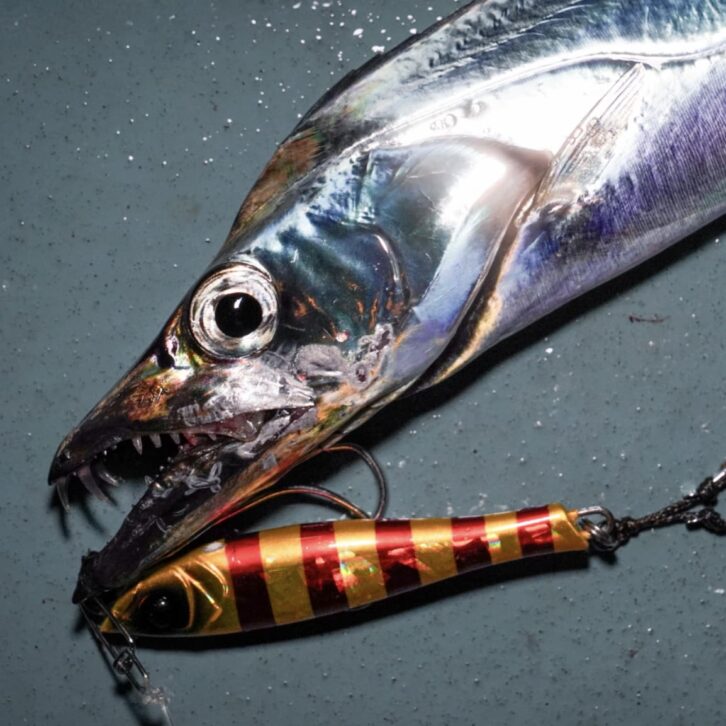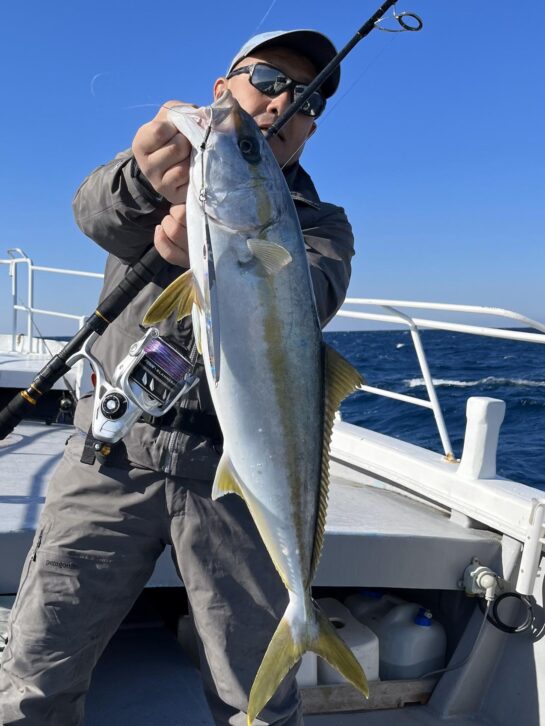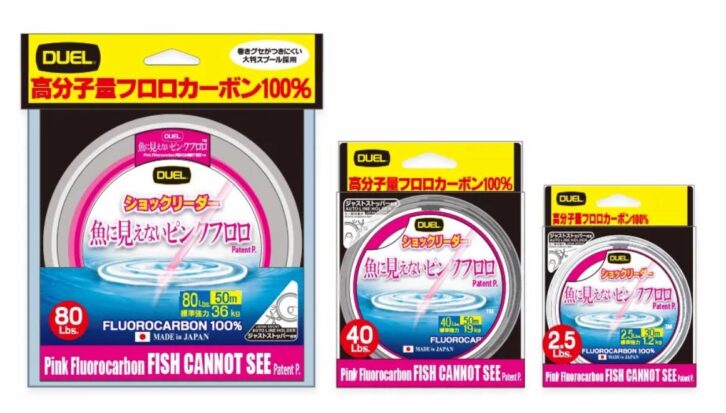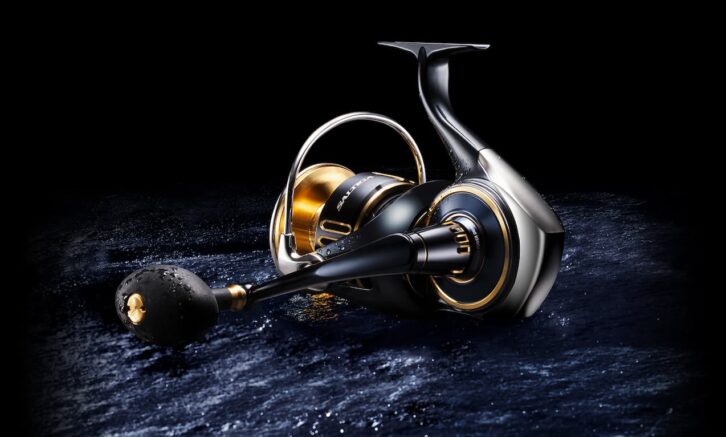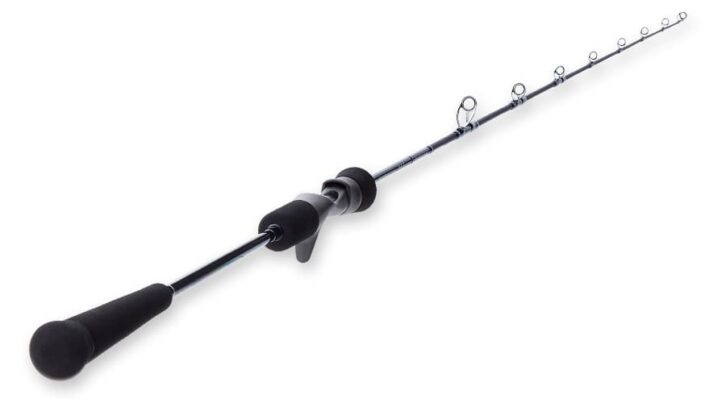SPJ master Yasuo Nishimoto and SOM have explored and perfected this product!
Don’t miss the short bite of slack-jawed bluefish, It does not miss the short bite of the slack-jawed bluefish, and once hooked, it holds the fish firmly! Single Hook Seigi Futoji No. 20, No. 23, No. 25
No matter what kind of fishing you do, the more expert you become, the more particular you become about your hooks. This is because they have learned from many experiences that the difference in hooks makes a big difference in catching fish. For this reason, Yasuo Nishimoto, a master of the slow pitch jerk, also chooses his hooks carefully for each target. Such hooks filled with Mr. Nishimoto's thoughts will be released by Studio Ocean Mark in the spring of 2024. It is an additional lineup of power models of the already released hook, SEIGI. We spoke with Mr. Nishimoto about this new model, as well as his actual fishing.
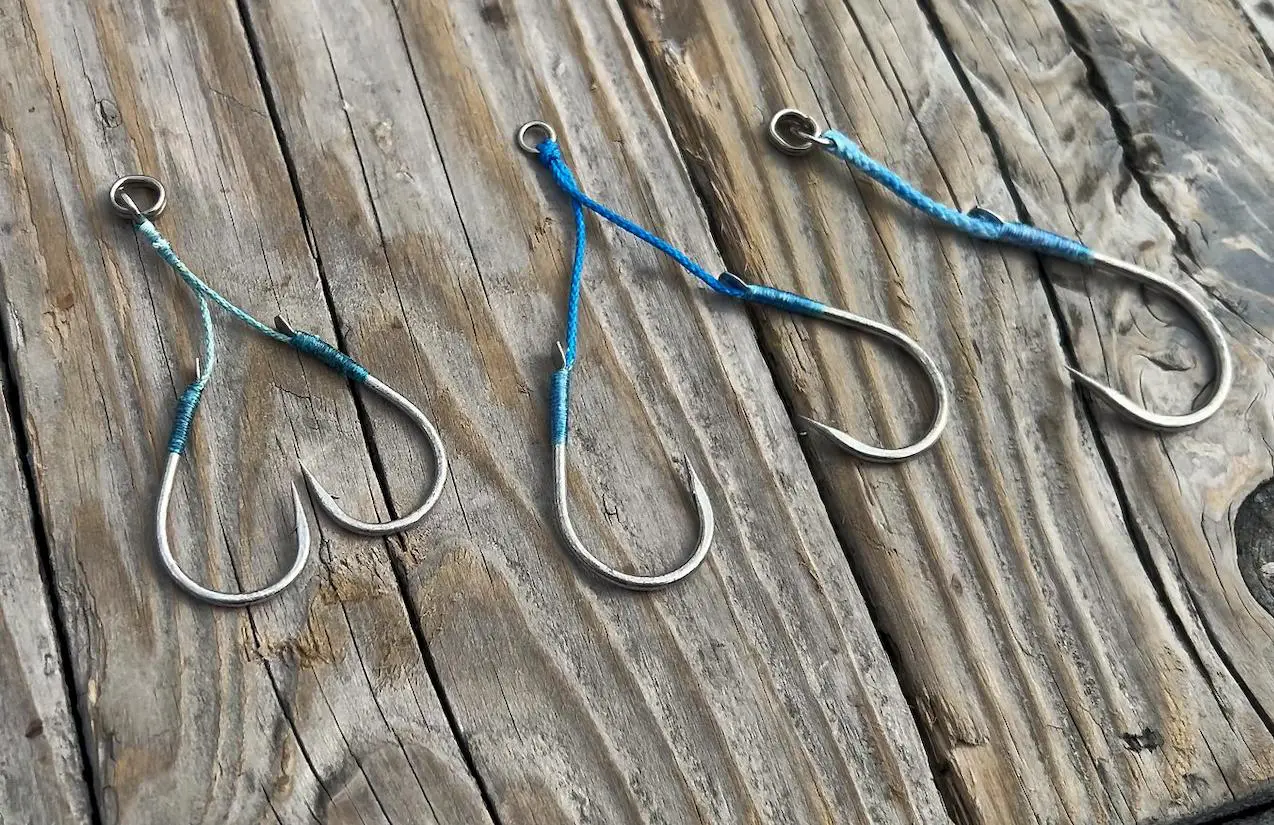
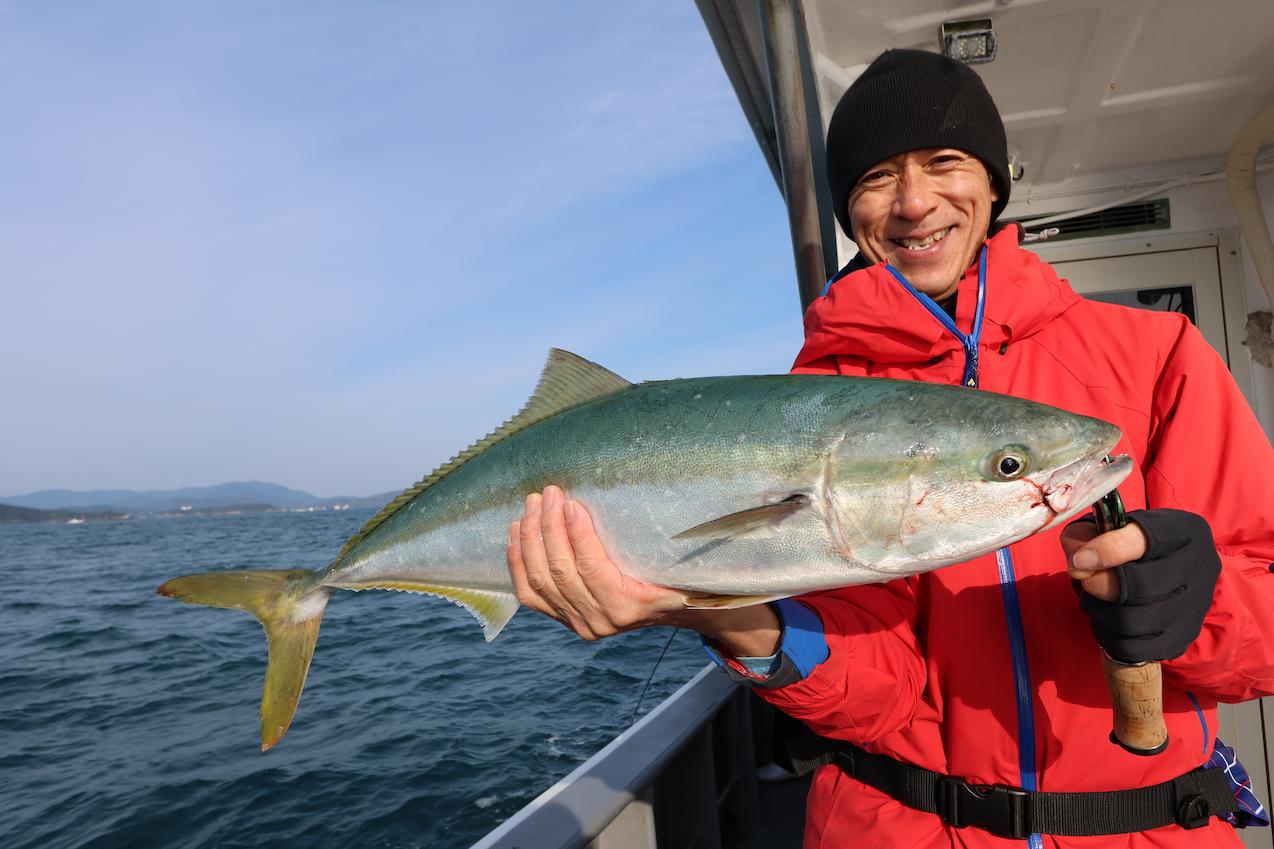
INDEX
Seigi, a hook specialized for targeting bluefish at slow pitch
Fishing hooks sting differently depending on slight differences in the angle of the hook tip, the shape of the hook tip, the point where the hook holds the fish meat, and the thickness of the wire diameter. First of all, how do you stab the hook into the fish? The design and size of the baleen changes depending on whether the baleen tip is quickly inserted into the mouth at the moment it enters the mouth, or whether it is moved inside the mouth before being inserted. The shape also differs depending on whether the bait is quickly inserted at the moment it touches the fish, or whether the fish’s movement or the weight of the jig causes the bait to thrust deeply into the fish’s mouth. The best hook also depends on the target fish and the fishing method, and the choice must be made. If you want to catch more fish, you have to consider many things. The more you think about it, the more profound and interesting the world of hook selection becomes.
In 2013, Studio Ocean Mark (hereafter SOM) started to produce original fishing hooks with the cooperation of Yasuo Nishimoto. Rather than commissioning a major hook manufacturer to make hooks and assist hooks, they got acquainted with a Banshu hook maker and began making their own original hooks in order to release what Mr. Nishimoto considered to be the ideal hook for slow pitch jerking. After repeated testing, it took three years to complete the project in 2016. This is the original “Seigi” model.
When the original Ao-Gi model was first developed, most of the slow pitch jerk assist hooks on the market were designed for root fish and mid- to deep-sea fish. However, as time progressed, anglers increasingly used slow pitch jerks to target large bluefish, such as flathead flounder, amberjack, and tuna. When we look at the general types of assist hooks used for targeting bluefish with high pitch jerks and slow pitch hooks used for root fish and mid- to deep-sea fish, respectively, the hook shapes are very different. In high pitch jerking for bluefish, the fish bites vigorously and the jerk itself becomes the hooking action, so the wire diameter need not be thick, and many hooks are strong enough to compete. On the other hand, for the slow pitch jerk, the hook-i size is designed to get the fish to bite during the jig action, and even with light line, thin wire diameters were the norm at the time, assuming that the hook would be hooked quickly. Under such circumstances, SOM searched for the best hook shape for slow pitch jerking against bluefish, and completed the Seigi No. 20 and No. 23.
https://studio-oceanmark.com/products/seigi/

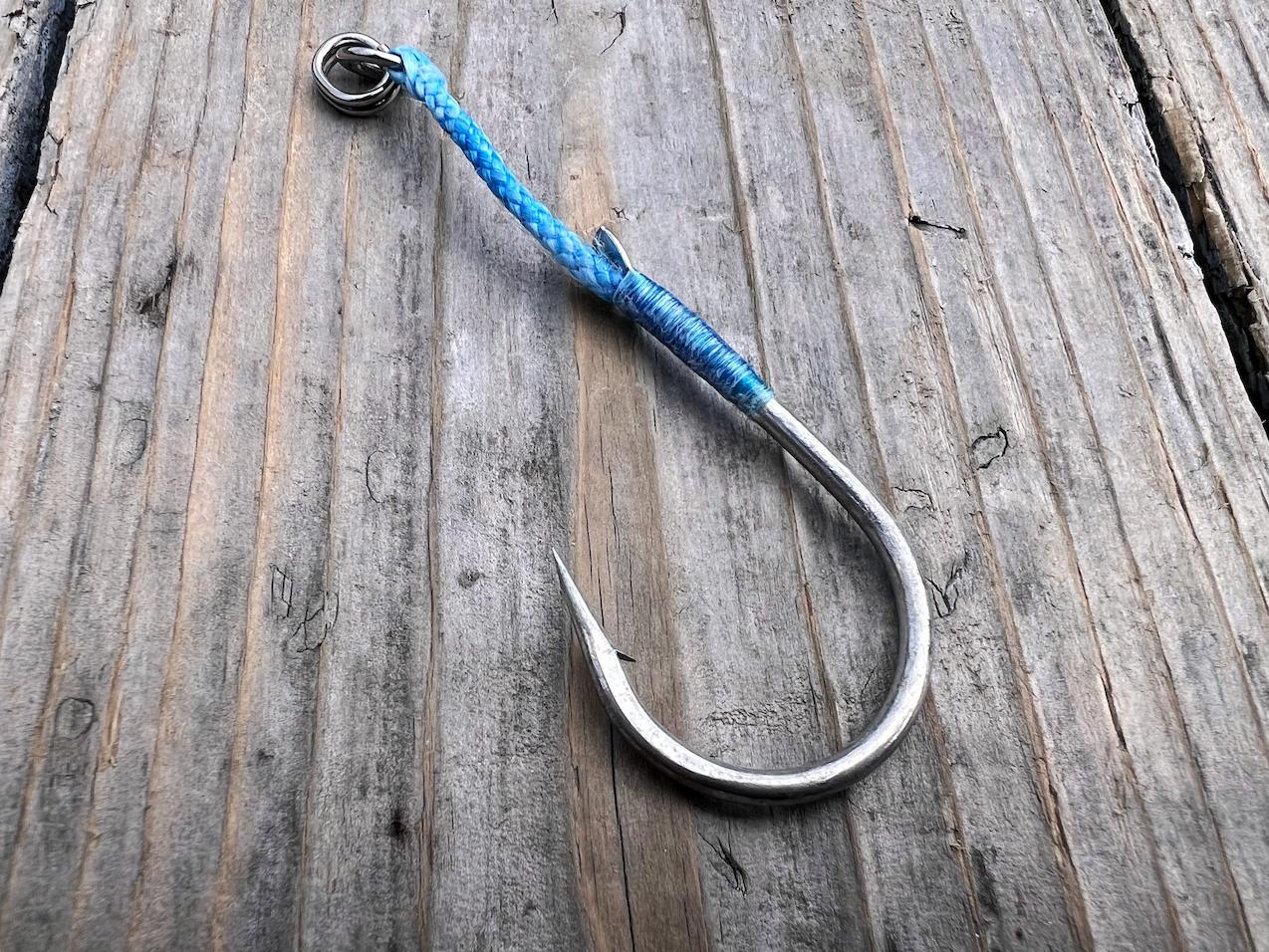
The photo shows the Seigi Futoji model, a new addition to the Hook and Seigi series. The lineup includes No. 20, No. 23, and a new size, No. 25. The new model is designed to be exquisitely shaped so that it easily enters the mouth of bluefish, easily penetrates between actions, and is easily hooked on or near a kan-nuki. Mr. Nishimoto perfected it after numerous test fishing trips.
In an era when anglers are targeting even larger bluefish at slower pitches
Eight years have passed since the release of Ao-Gi, and slow pitch fishing has evolved.
Lines have become stronger, and anglers now have the skills to target even larger bluefish with conventional tackle, and the absolute strength and size development of hooks are now required. That is why we created the Taiji model with a higher linearity of the existing No. 20 and No. 23, and a new No. 25 for bigger fish” (Nishimoto).
The line between high pitch and slow pitch jerking has become more blurred than before. Lines for high-pitch tackle have become thinner, and rod actions have changed from hard to soft. Many anglers are still using the same hook size as before, and even when they do get a hit, the hook often falls off during the fight. Anglers who mainly jerk with a slow pitch increase the size of the wide-gauge hooks they normally use, but the hook shape often causes the hooks to slip or otherwise foul, and the angler often hooks out during the fight.
The new Seigi may appear frail to anglers who mainly use high pitch, but it is based on the same small sea bream hook as the previous model. The long shank works on the principle of leverage, allowing the hook tip to be inserted deep into the fish’s mouth. In addition, when using twin hooks, the small size and light weight of the hooks often allows the two hooks to enter the mouth and capture the hookfish. It is possible to catch large fish without difficulty, which is unimaginable from the hook size.”
The reason why a hook gets caught during a fight is often due to a poor hooking point, such as a slip or lip. Also, the hook stretches when the hook is not fully inserted into the hook and the bait is not fully hooked. The Seigi Futoji has a thinner wire diameter than the hook used for high pitch, but it enters the mouth more reliably and can be used for large fish by quickly hooking deep into the bait near the kanuki or kanuki, which is the ideal hooking position. The design of the straight point, which allows the bait to stand up more easily than a curved point, also makes it possible to bring bites on the fall to the hook.
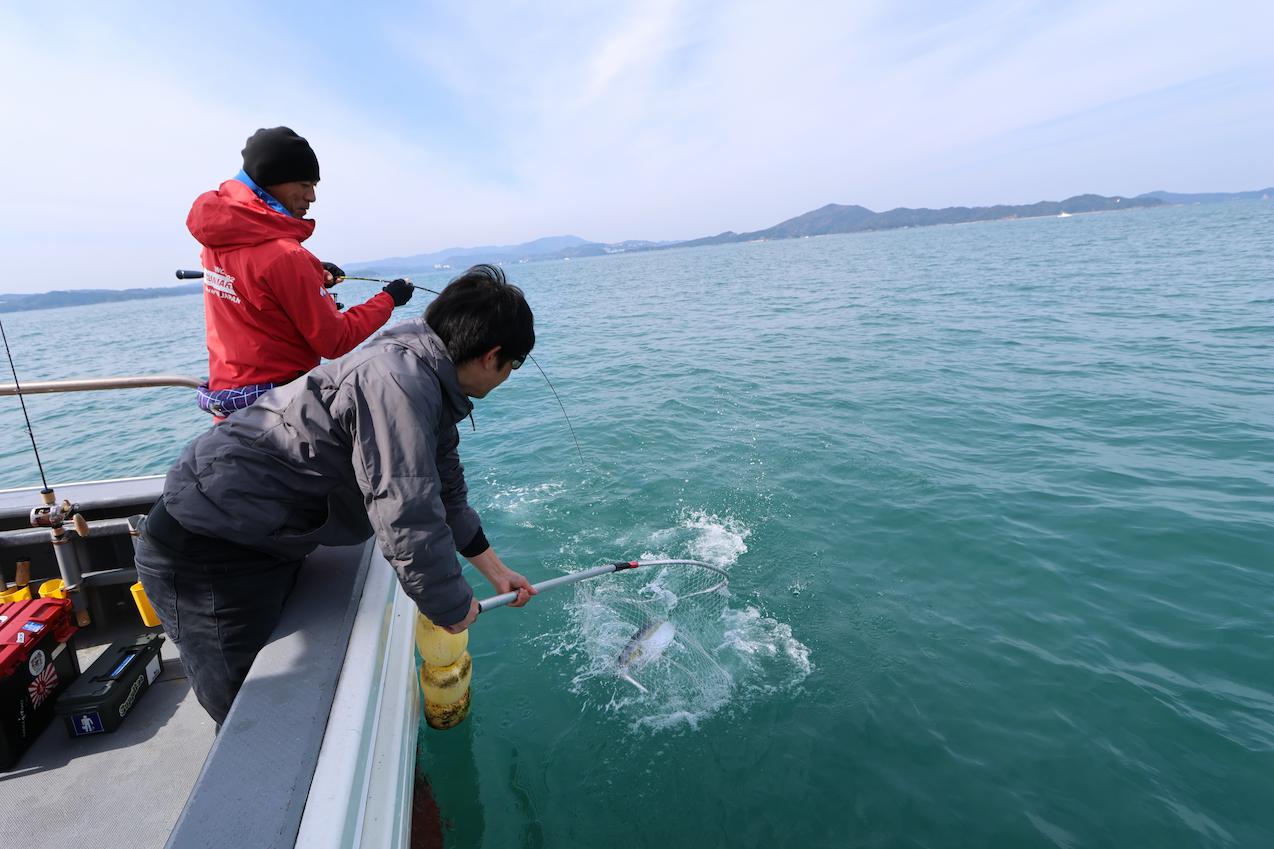
The bait is more likely to be caught if the bait is firmly placed in the mouth and penetrated near the hook and hook. The blue technique was perfected with this performance in mind.

When the bait is firmly hooked in the hook and is not foul-hooking, the hooked fish will not move strangely and can be pulled in more smoothly. This leads to a larger fish.
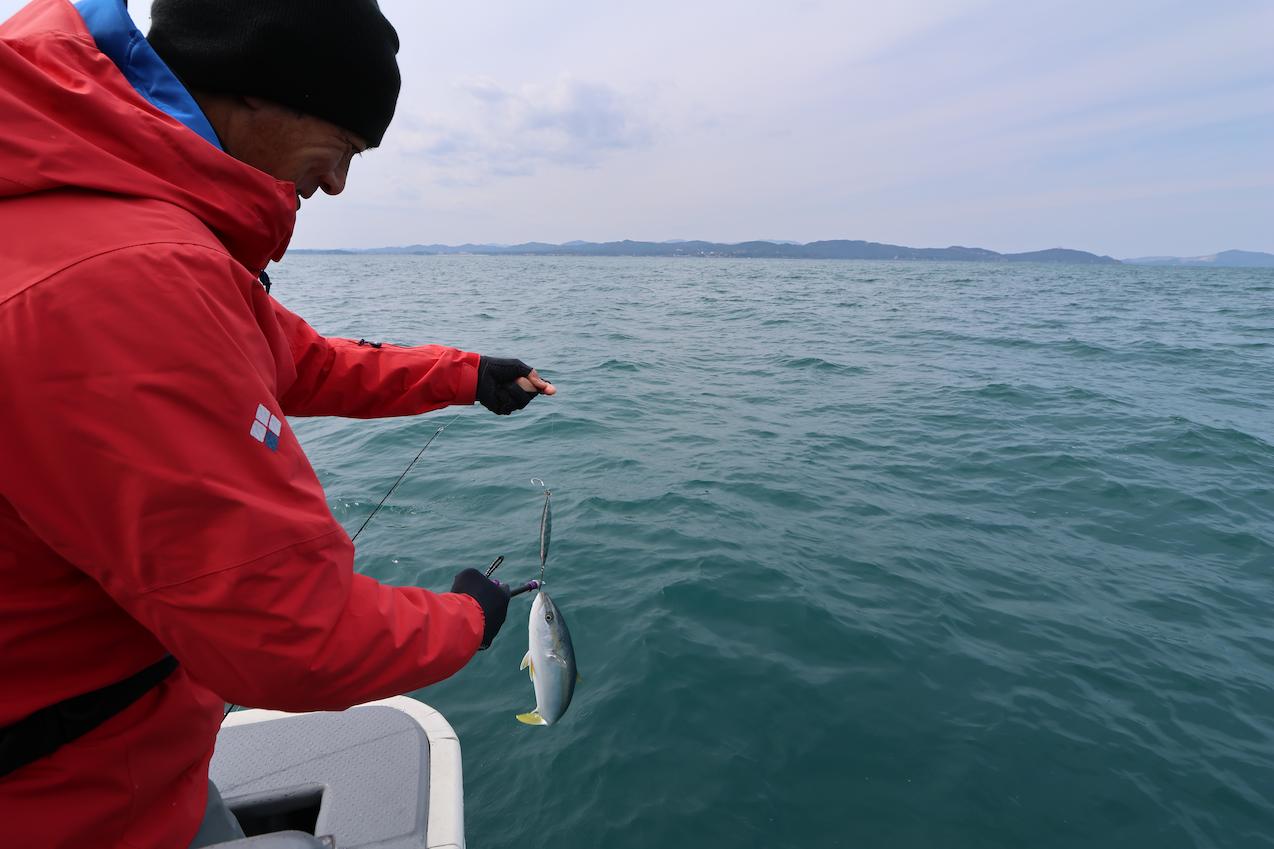
Less foul hooking means less damage to the fish when it is released.
Final test in Toba. All good-sized fish were canned.
With the product launch just around the corner, Mr. Nishimoto and I visited Toba, Mie Prefecture, where jigging for bluefish is popular, for a photo shoot. The winter yellowtail rush had died down, and Captain Yamamoto of the popular boat Casting Heat, who asked us to board for the photo shoot, said, “It may be a little tough. However, we decided to use mainly Seigi No. 20 and No. 23 to see how they perform.
As a result, Mr. Nishimoto was able to catch walleye class fish in the 70-60m depth area in the first half of the day, and the results were good. The pattern was to reel in a little fast for about 10 m from the bottom, and then lure the fish with a slow pitch fall to get a hit. He said, “I had a lot of short bites when I reeled in and started to fall, but all the fish were easily pulled in as the hooks on either the front or back of the lure were firmly hooked on or near the hooks.
In this case, the fish were not that big, so we used No. 20 and No. 23 hooks. In addition to these two, we have a new No. 25 hook, but it took a lot of time, prototypes, and fishing trips to develop just three sizes. The silhouette of the hook is based on the original model. Since we were aiming for big fish, we designed this hook with the idea that it would pull the hook out firmly, fight hard, and not break up the hook.
When we asked Mr. Nishimoto about the testing of the Taichi model, he told us that they had already begun testing it in 2019. It seems that the Seigi Futoji model was completed after five years of testing. Incidentally, that testing was done on various targets and locations. First, it was used on a Canadian king salmon expedition in 2019. Then, it was used in Ogasawara to catch multiple species of fish including amberjack, and furthermore, on a tuna fishing trip, it caught a 20 kg yellowfin tuna in No. 20 Futoji, a 30 kg yellowfin tuna in 23 kg Futoji, and a 50 kg or more bluefin tuna in No. 25, with minimal deformation of the hook.
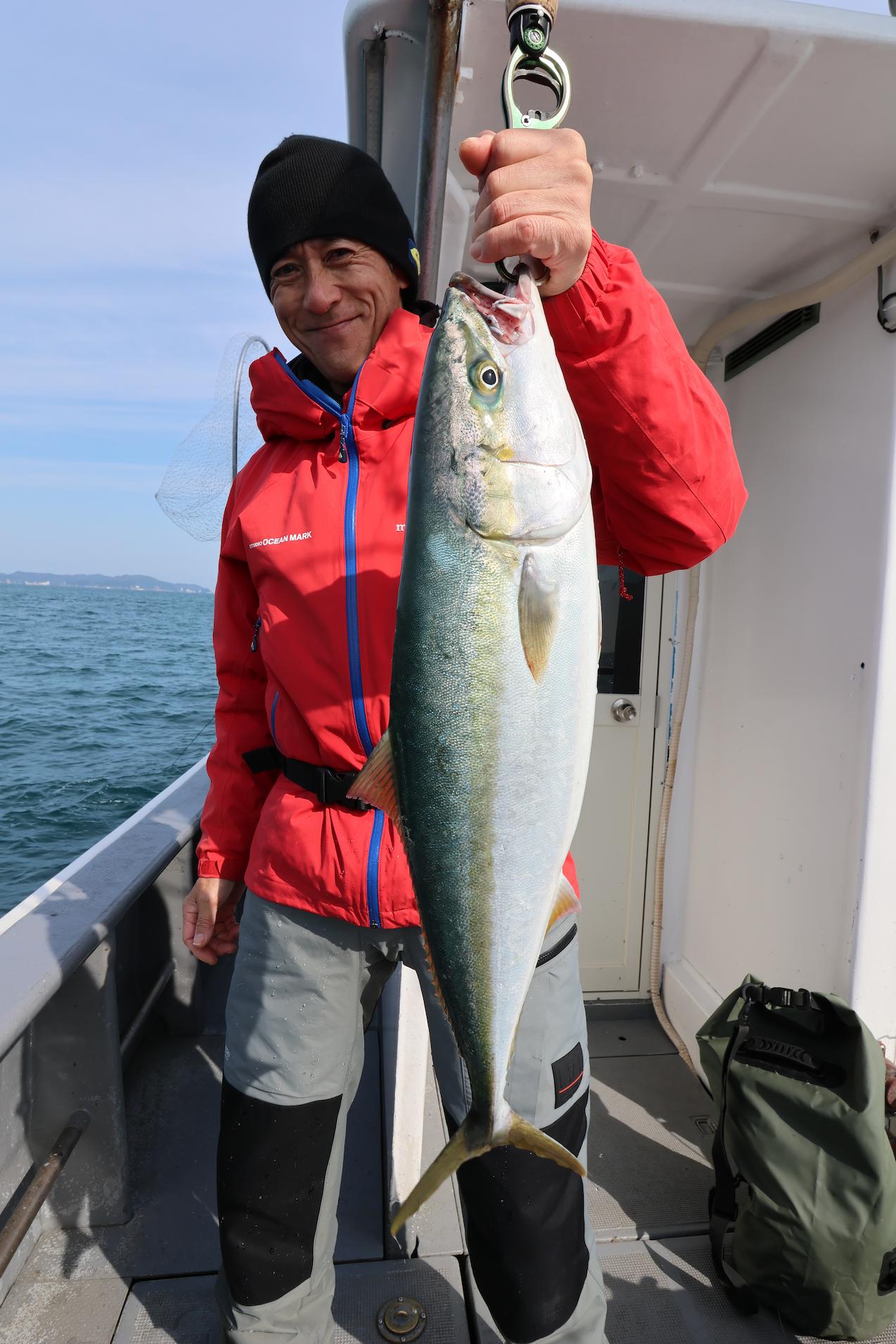
On the day of the photo shoot, the boat went out on a shared boat, and in the early part of the day, the walleye class fish hit the water in small numbers. Mr. Nishimoto was also able to figure out the pattern of hits at that time, and consistently had hits.
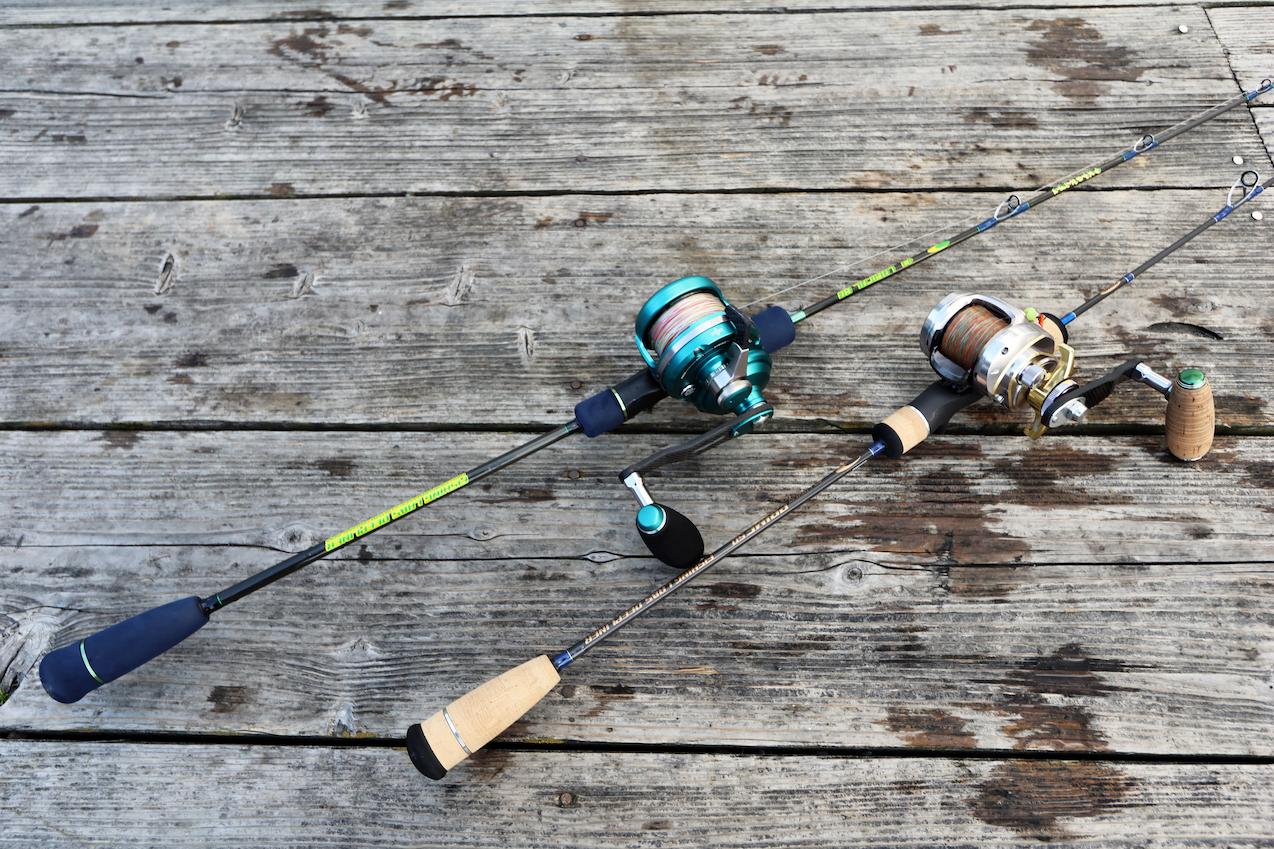
Nishimoto’s tackle.
ROD: Deep Liner LOGICAL 60 #3, LOGICAL PRIME 55 #3
REEL: Studio Ocean Mark Blue Safari 35, BLUE HEVEN L50-20th
LINE: X BRAID ODDPORT #2 + fluorocarbon leader #14
Berkley Super FireLine COLORED #1.5 + fluorocarbon leader #10
SPLITRING: Studio Ocean Mark TRACK SPLIT RING M5
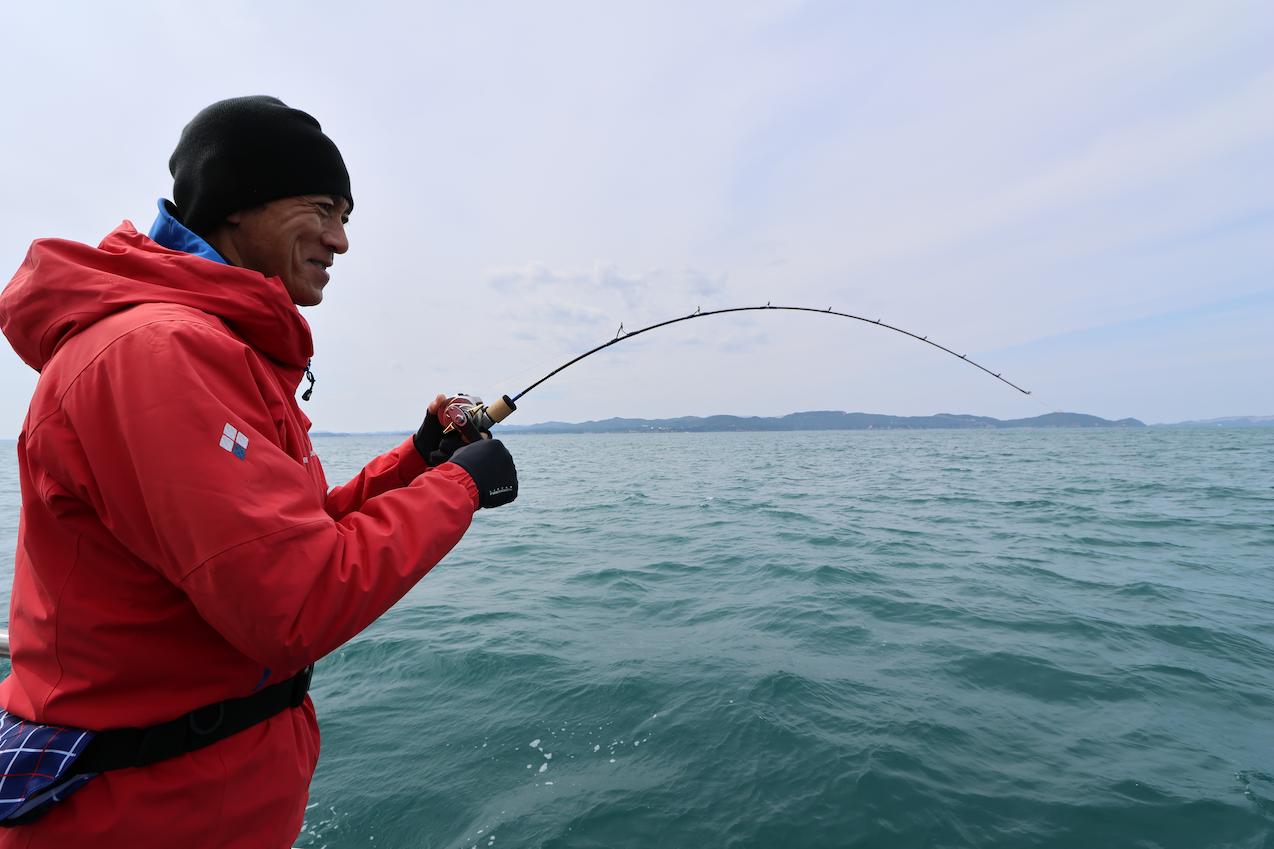
The main tackle reel is a Blue Safari 35. This model is equipped with a winged drag. This wing drag is a drag lever that allows the angler to raise or lower the drag by 400 to 500 g with a single click from a pre-set drag value. When targeting bluefish, Nishimoto sets the drag according to the line used at the center position and manipulates the drag according to the movement of the fish. By manipulating the drag, he avoids not only line breakage, but also avoiding unintentional widening of the hooking hole at the hooked area, which leads to hook-outs, and minimizes hook-outs in the case of shallow hooking due to poor hooking location.
A lineup filled with the particulars of each hook
The basis of Tester Nishimoto’s commitment to fishing hooks is the compatibility between the hook size and the target fish, and he is not satisfied with going up or down one size after the other. SOM agrees with this style. Furthermore, they were particular about the finish, just as they had done with the conventional blue technique.
The wire diameter was slightly changed for each model, and the length and direction of the bail tip, the angle of the ears, and the size of the fly hooks were all slightly different. In addition, the assist model has a high-quality wound finish that anglers who mainly use slow-pitch jerking can see with a single glance.”
Fluoro line, which provides minimum tension to the thin assist line, is used, and the silhouette of the seki string section is made thinner by using a bag stabbing finish, which makes winding the seki string difficult. With the unscrewing specification, the thicker silhouette can cause the assist line to create a rudder effect, which changes the movement of the jig. The bag stabbing finish is a method that some anglers used to make for personal use, but it is very difficult to mass-produce. Therefore, the company went to an assist hook assembly factory and provided technical guidance to highly skilled craftsmen, which led to the perfection of this method.

For yellowtails and wrasses, the best size hooks are No. 20 and No. 23. The new size, No. 25, is also available. All of them have slightly different shapes.

The assist line uses a high quality coiled finish. Although it is difficult to mass-produce, the company has been able to commercialize this product by providing technical guidance to craftsmen at the assist hook assembly factory.
Incidentally, the assist specifications for the previous Seigi series models were twin 25mm and 35mm for No.20 and No.23, but the new additions, No.20 and No.23, have twin 30mm, 35mm, and 40mm assist specifications, and No.25 has single 30mm, 35mm, and 40mm assist specifications, for a total lineup of 8 assists. and a total of 8 assists in the lineup. With these hooks, anglers will be able to target bluefish by slow pitch jerking in the waters around Japan.
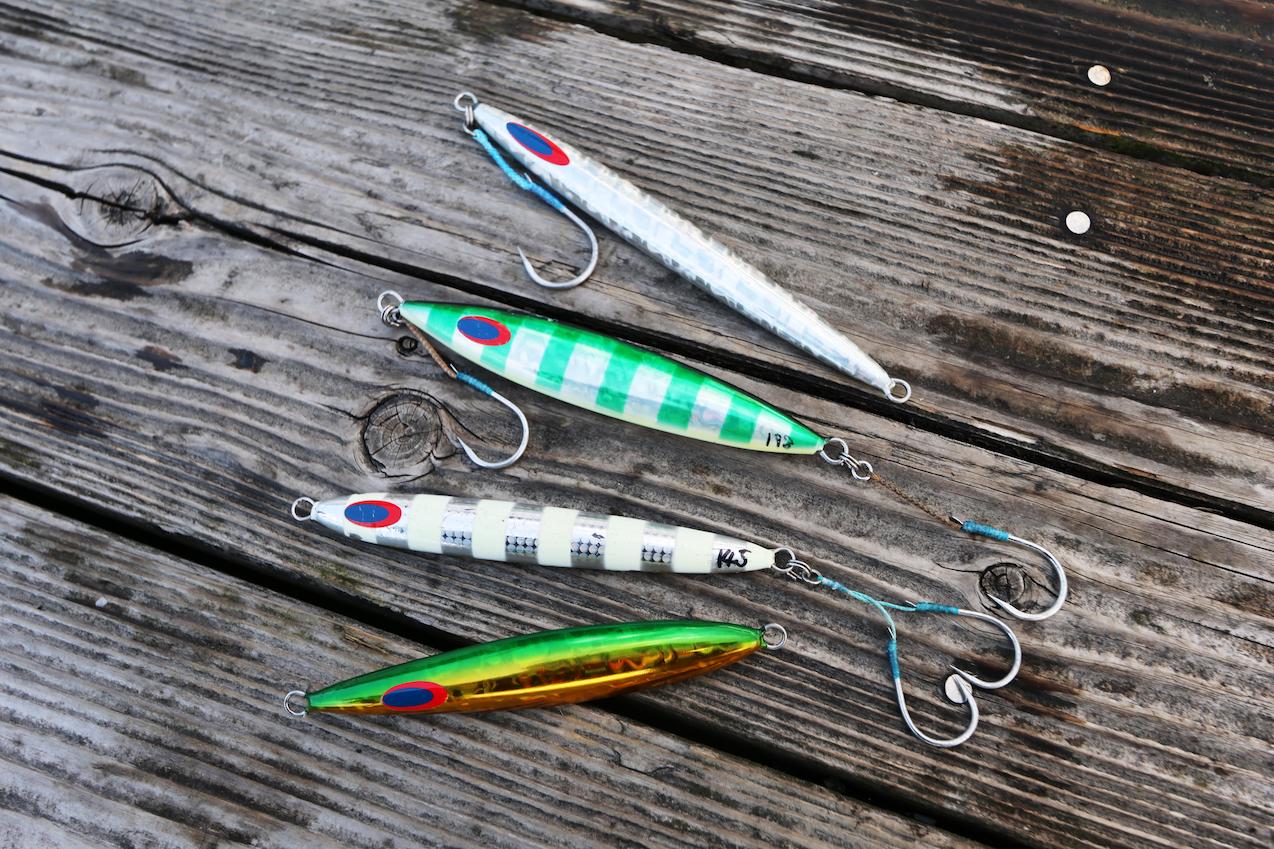

A variety of jigs are available so that anglers can find a pattern that suits the situation. We prepared double assist hooks as well as single hooks of various sizes, and we were able to see changes in the jig’s movement while fishing.
Advanced anglers are more particular about their hooks and have their own theories. This is because they have found the answer to the fishing methods they have mastered and the fishing hooks that match those methods. It is not only the sharpness and strength of the hook tip that is important, but also the imagination of how the fish you are targeting attacks and hooks the lure you are moving, and the results of the fishing results you have achieved so far. What kind of hook is best for your fishing? Thinking about it is one of the most interesting aspects of fishing. And if you are jigging and targeting large bluefish with slow pitch jerks, the Seigi Futoji will be one of the answers to this question.

The more advanced angler becomes, the more he or she will be able to tell the difference between a good and a bad hook. By imagining your jigging style, the species of fish you are targeting, and how the fish will bite, you will be able to choose the best hook and reduce the chances of getting caught. Think again about what kind of hook is best for you. There is a deep world of fishing hooks out there. And if you are interested in the Ao-technique, please give it a try.
Interview supported by Studio Ocean Mark
https://studio-oceanmark.com/
Interviewed by: Casting Heat (Toba, Mie Prefecture)
https://casting-heet.com/


